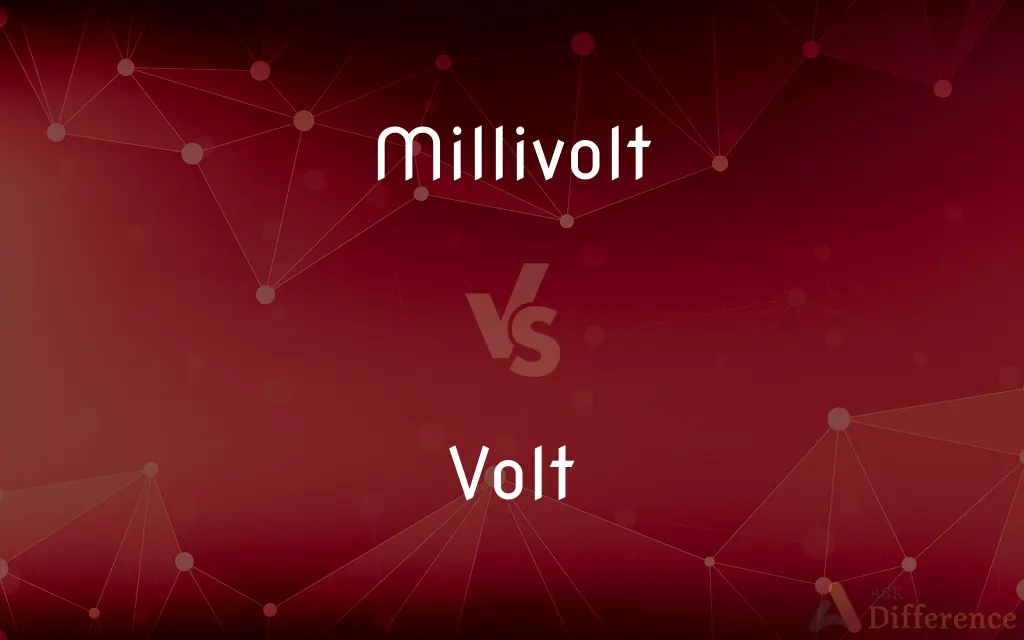Millivolt vs. Volt — What's the Difference?

Difference Between Millivolt and Volt
ADVERTISEMENT
Compare with Definitions
Millivolt
One thousandth of a volt.
Volt
The volt (symbol: V) is the derived unit for electric potential, electric potential difference (voltage), and electromotive force. It is named after the Italian physicist Alessandro Volta (1745–1827).
Millivolt
A unit of potential difference equal to one thousandth (10-3) of a volt.
Volt
The SI unit of electromotive force, the difference of potential that would carry one ampere of current against one ohm resistance.
Millivolt
One thousandth (10-3) of a volt, abbreviated as mV.
ADVERTISEMENT
Volt
Variant spelling of volte
Millivolt
A unit of potential equal to one thousandth of a volt
Volt
Make a quick movement to avoid a thrust.
Volt
The SI-derived unit of electric potential and electromotive force, equal to the difference of electric potential between two points on a conducting wire carrying a constant current of one ampere when the power dissipated between the points is one watt. See Table at measurement.
Volt
A circular movement executed by a horse in manège.
Volt
A sudden movement made in avoiding a thrust in fencing.
Volt
In the International System of Units, the derived unit of electrical potential and electromotive force (voltage); the potential difference across a conductor when a current of one ampere uses one watt of power. Symbol: V
Volt
A circular tread; a gait by which a horse going sideways round a centre makes two concentric tracks.
Volt
(fencing) A sudden movement to avoid a thrust.
Volt
A colour similar to lime often used in Nike products. CEFF00
Volt
A circular tread; a gait by which a horse going sideways round a center makes two concentric tracks.
Volt
A sudden movement to avoid a thrust.
Volt
The unit of electro-motive force; - defined by the International Electrical Congress in 1893 and by United States Statute as, that electro-motive force which steadily applied to a conductor whose resistance is one ohm will produce a current of one ampère. It is practically equivalent to
Volt
A unit of potential equal to the potential difference between two points on a conductor carrying a current of 1 ampere when the power dissipated between the two points is 1 watt; equivalent to the potential difference across a resistance of 1 ohm when 1 ampere of current flows through it
Share Your Discovery

Previous Comparison
Smoke vs. Ash
Next Comparison
Unnecessary vs. Unnecessarily














































